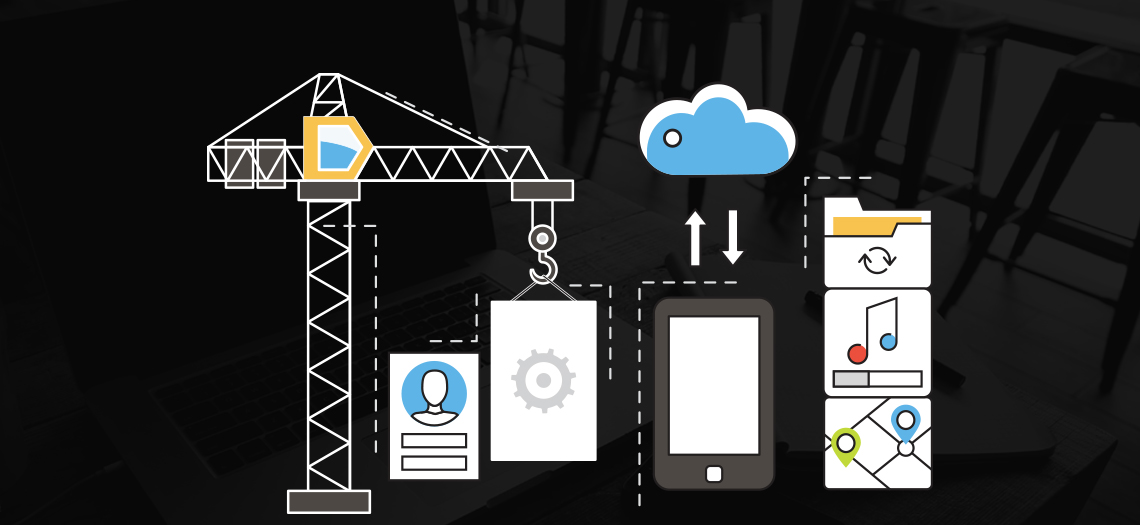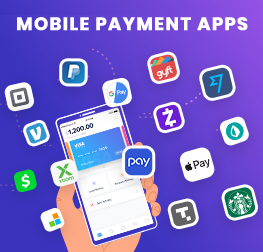How to Select a Mobile Application Development Platform (MADP)?
With an ever-increasing demand for mobile apps, enterprises are adopting mobile application development platforms (MADPs) for accelerating the pace of development. MADPs expedite mobile application development for developers by providing them an integrated framework for designing, developing, testing, deploying, and maintaining their mobile applications.
According to Gartner “by 2020, more than 75% of enterprises will have adopted at least one mobile application development platform to accelerate their digital business transformation strategy, up from approximately 33% in 2015.”
What is the Mobile Application Development Platform?
A mobile application development platform (MADP) is a type of software that allows an organization to develop, test and deploy mobile apps rapidly for smartphones or tablets.
What Does A typical Mobile Application Development Platform (MADP) Offer?
- A cross-platform development framework (iOS, Android, Windows, BlackBerry)
- Native application development support
- Extensible middleware for user management, security, and connectivity
- A framework to connect client-side applications to middleware
- Libraries that provide standard UI elements
- MDM (Mobile Device Management) or MAM (Mobile Application Management) integration
However, selecting between the IBM, Kony, Adobe, Oracle, and SAP is not an easy task. It is crucial to evaluate these platforms based on their ability to meet both your business and technical requirements. These evaluations also help in your present and long term mobile application development requirements.
Top 6 Criteria to Consider While Selecting A Mobile App Development Platform (MADP)
1) Developer Tools
The tools provide a collaboration platform for developing, testing, debugging, deploying, hosting and maintaining apps in an Agile manner. A host of MADPs now offers low code application development with pre-designed templates and drag-and-drop support. While these tools might appear very promising, developers generally will prefer a CLI.
A CLI provides higher agility in setting up and managing the development environment. Hence, your developer team will play a crucial role in selecting the mobile app development platform as it has to be comfortable with the level of controls the MADP provides. Restrictions with CLI can be frustrating for a team of experienced developers.
2) Access to Open Source Libraries
The developer community is highly dependent on open source libraries and APIs. These libraries play a crucial role in increasing the development speed, integration, and delivery of the app. Make sure your MADP provides easy access and integration with such libraries.
3) Integration of Native and Web Components
The mobile space is highly volatile. There was a time when native mobile apps were considered as the holy grail of customer engagement. However, the trend seems to have passed and progressive web apps are now gaining a lot of attention. Nonetheless, you need to invest in a mobile app development platform that provides easy integration of native and web components and helps in developing mobile apps for multiple platforms.
4) Security
Lost mobile devices continue to haunt enterprises. Hence, enterprise apps on such devices need an additional layer of security with standard authentication/authorization mechanisms. The MADP under evaluation should provide easy and secure management of user/app/data under all environments. For this, you should evaluate the MADP’s integration with MDM and MAM tools.
5) App Monitoring and Analytics
User experience is a critical parameter for most enterprise applications. As organizations prefer Agile ways of development, user feedback triggering from the use of the app allows developers to accommodate necessary changes in a swift manner.
MADPs play a crucial role in converting this user data into visual insights. The MADP should be able to provide you easy monitoring of your app performance, crash events, application-to-server requests (push notifications), server-side logs, security logs, and analytics.
6) Deployment
MADPs can be deployed on-premise or can be availed as a cloud-based service. This will rekindle the classic cloud vs on-premise debate. The cloud service will help you start early without any significant upfront costs. On the other hand, an on-premise subscription might provide you the lower total cost of ownership (in the long run) with higher levels of security.
Although a mobile application development platform can significantly improve the development pace, it will have its own learning curve. Further moving away from traditional workflows can be an issue for mature development teams. Therefore, before making any investment, organizations must ascertain developers’ needs and MADP’s capability in delivering the same.
Credencys Solutions Inc is a leading mobile application development company and solutions provider. We can help you in selecting an MADP for your organization’s needs or in developing mobile apps for multiple platforms.
To evaluate our services, you can engage with us in a 15-day Blueprint Workshop. Blueprint is a collaborative agile workshop that can help you create a roadmap for your application development starting from building a proof of concept to creating clickable prototypes and MVPs.
Frequently Asked Questions
Which software is used for mobile application development?
Xamarin is a highly used mobile app development platform. It uses C# codebase to build an app for Android, iOS and Windows platforms. One of Xamarin’s best features is that it allows developers to write the code once and shares it across multiple platforms. Its the main characteristic of a cross-platform mobile app development technology.
What are the different types of platforms?
The common types of technology platforms are Operating Systems, Computing Platforms, Database Platforms, Storage Platforms, Application Platforms, Mobile Platforms, Web Platforms, Content Management Systems, and more.
What is the best mobile app development platform?
The best mobile app development platforms are Zoho Creator, BuildFire, Ionic, Xojo, Unity, Buildbox, ShoutEm, RhoMobile, and more.
What is the best tool for mobile app development?
The best mobile app development tools are PhoneGap (Apache Cordova), Appcelerator, Xamarin, Sencha Ext JS, MonoCross, Adobe Build, Kony AppPlatform, Convertigo, and more.








Tags: